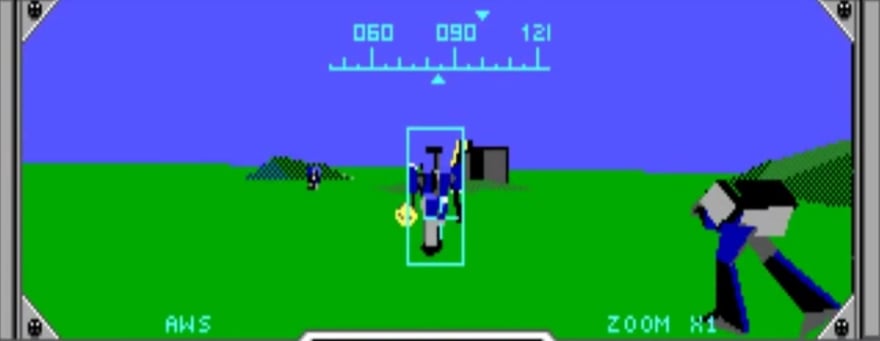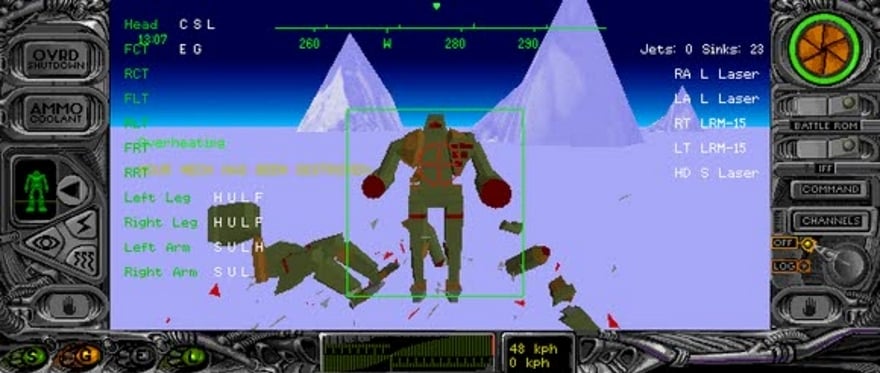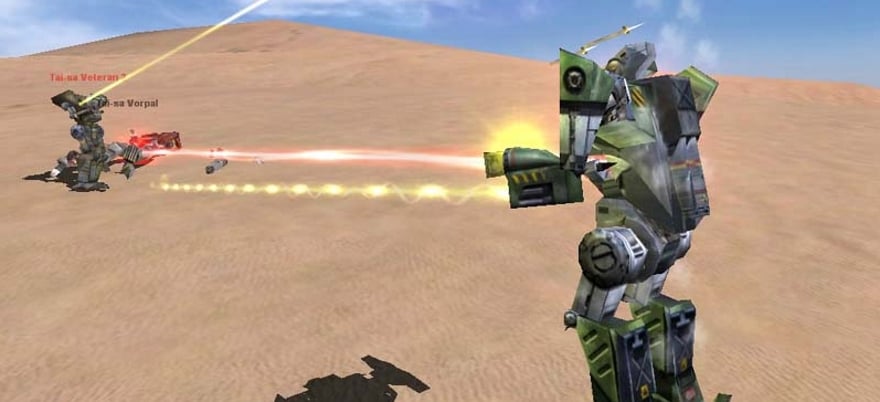
It was the 31st century, where feuding factions decided to settle their differences by throwing multi-ton war robots at each other. It was also 1984, when Jordan Weisman and L. Ross Babcock III created a tabletop wargame called BattleTech (originally BattleDroids). This new game allowed players to pit heavily-armed ‘Mechs against each other in a fight to the brutal, laser-singed death.
BattleTech was a hit and spawned a franchise that not only included the tabletop and pen-and-paper roleplaying game but an entire series of video games as well. This is one of those franchises where players are super-duper serious about their hobbies, forming lances and companies with friends that would stick together as they experienced the range of mediums.
In 1987, Weisman and his crew began to build “virtual world centers” where players could get into an oversided arcade pods to play BattleTech against others in the room. This early stab at a 3-D multiplayer title would be but a herald of greater gaming to come.
 MechWarrior (1989)
MechWarrior (1989)
While there had been other BattleTech video games prior to this one, MechWarrior was the first computer title that portrayed the action in a 3-D world. The player saw the action from the perspective of a ‘Mech pilot and could maneuver around the field, attacking other ‘Mechs and assisting computer allies.
The move to 3-D and the multitude of choices that players experienced made MechWarrior a fast hit, spawning a long-running series of single-player BattleTech games. However, it was also about to branch off into a new direction thanks to an aggressive studio looking for online gaming potential.
 Multiplayer BattleTech: EGA (1991)
Multiplayer BattleTech: EGA (1991)
Kesmai, one of the very first studios that dealt with online gaming, had been successful with a streak of popular titles on the GEnie gaming service. One of its hottest titles was Air Warrior, a multiplayer game that allowed players to take to the skies in fighter planes in an attempt to shoot each other down. As they expanded the studio’s portfolio, Kesmai’s owners were looking for a ground-based equivalent to Air Warrior. With MechWarrior, they figured they found their answer.
The MechWarrior engine was modified to work in a multiplayer online environment, and in December 1991, Multiplayer BattleTech: EGA (MPBT) went online. The end result struggled with a poor performance but worked enough and was novel enough that it brought in the crowds.
Players would organize companies, roleplay, and socialize with the game’s text chat, but then get down to business with the on-field combat. There were five houses (factions) from which to pick, each of which would struggle to control planets. It was a thrill for players to be stomping around in ‘Mechs with three other friends alongside, and the game’s attempt at delivering strategic elements (such as repair, supply lines, and a variety of ‘Mechs) kept gamers coming back.
It was expensive to get hooked on MPBT, however. The game charged by the hour, depending on the service and time of day. There were reports of it being as costly as $18/hr. during primetime, although most players could expect to burn through a buck or three an hour as part of the package.
Multiplayer BattleTech: EGA didn’t get the best reviews during its run, but its popularity more than convinced Kesmai that the concept had potential — and a future.
 Multiplayer BattleTech: Solaris (1996)
Multiplayer BattleTech: Solaris (1996)
The EGA era of Multiplayer BattleTech wound down by 1996 as Kesmai furiously worked on an improved sequel. Beta testers flocked to see what Solaris offered (it helped that the beta period was completely free) and then stuck around as it launched in the summer of 1997 to rave reviews.
“This game rocks, and it rocks hard,” Gamespot said at the time, echoing the feelings of the growing playerbase. With gameplay that was easy to pick up, greatly improved graphics, and multiplayer across faster modems, Solaris overcame EGA’s weak spots to become the ‘Mech MOBA that players were craving.
“This game was a revelation to my sprouting video game mind,” one blogger wrote years later. “You mean I could game with people all over the world? […] There was little else that was as satisfying as linking up several large lasers in one glorious mech-disabling salvo.”
Solaris was a free download but stuck to the hourly charge for the early years of its run (between $1.25 and $2.75 an hour). It was available on AOL, CompuServe, and GameStorm (as well as through other services) and required only that you had a computer that could handle its mighty recommended specs, such as 15 MB hard drive space and a 9600-baud modem.
What was once hundreds of players in Multiplayer BattleTech: EGA became thousands in Solaris, fighting with and against each other in the game’s deadly arenas. Players had the choice of up to 80 ‘Mechs to pilot and developed favorites during their careers. There was even a metagame that was furthered by Kesmai’s seasonal tournaments and the like.
Solaris was a good thing, and Kesmai was not about to ignore the future of one of its most profitable and popular titles. Work began on a second sequel, but any excitement over the franchise’s future was about to come to a crashing halt.
 Multiplayer BattleTech: 3025 (2001)
Multiplayer BattleTech: 3025 (2001)
As the internet age blossomed and MMOs began to sprout left and right, Kesmai started constructing a worthy successor to the Multiplayer BattleTech franchise. The game was called Multiplayer BattleTech: 3025 and was to get past the confines of Solaris’ arenas to present true worlds at war.
Fans who got into the beta for Multiplayer BattleTech: 3025 had glowing things to say about the across-the-board improvements. The game was to be truly massive, allowing for up to 10,000 gamers to play alongside each other simultaneously. There was true planetary conquest, 4v4 matches, and a vibrant economic system.
As so often happens to promising games, 3025 was ultimately hampered by unfortunate business decisions. Kesmai was acquired by Electronic Arts in 1999, which should have been a warning sign to any fans following the series. The game went back to the drawing board following the buyout, with features shifted and changed.
Ultimately EA shut down Kesmai at the end of 2001, taking with it any chance of 3025 releasing. The team announced the closure of the beta with sadness in December of that year: “We understand that Multiplayer BattleTech: 3025 holds a remarkably strong community, with equally strong ties to BattleTech history, as it moved from EGA, to Solaris and of course this beta. We are extremely grateful to have brought, at least, a small part of our BattleTech vision directly to you.”
And the ‘Mech marches ever on
While the Multiplayer BattleTech saga rumbled to a stop in 2001, MechWarrior games remained very much a thing. There were high hopes in the old MPBT community when MechWarrior Online was announced and then released a little while back, and while I can’t comment with authority as to how it’s been received, I do think that it’s a testament to the popularity of the old online games that it got made at all.
Did you play Multiplayer BattleTech? If so, share some of your memories below!
 Believe it or not, MMOs did exist prior to World of Warcraft! Every two weeks, The Game Archaeologist looks back at classic online games and their history to learn a thing or two about where the industry came from… and where it might be heading.
Believe it or not, MMOs did exist prior to World of Warcraft! Every two weeks, The Game Archaeologist looks back at classic online games and their history to learn a thing or two about where the industry came from… and where it might be heading.













